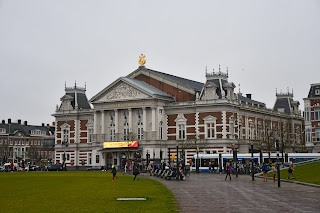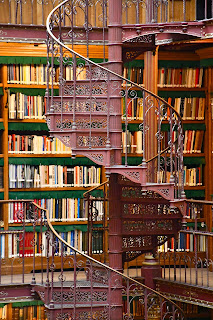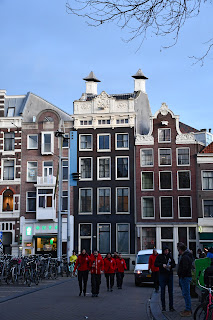I Saw the Largest Vermeer Exhibition Ever. It Was Fine.
Amsterdam is not a city for the technologically inept. Several museums, such as the Van Gogh, require tourists to book their tickets online, while others, like the Moco, incentivise them to do so with significant discounts. My friend Bonnie and I knew this when we were planning our trip, and we spent a minor fortune on simply making sure that we would not be turned away at the door.
The Vermeer exhibition looked just like any other special exhibition on
the Rijksmuseum webpage. Entry cost an additional ten euros, but this
experience of Dutch artistic culture promised to be a pertinent addition to our
visit. We continued to plan the whole day without much special consideration
for the Rijks: we decided to sandwich Vermeer between our morning visit to the
Van Gogh Museum and an afternoon of strolling about the city’s historic centre
and picturesque canals.
Then the reviews started coming out. On February 8th, the
Financial Times wrote of an “unrepeatable exhibition,” highlighting the
Rijksmuseum’s feat of gathering 28 works by the Dutch artist – almost twice as
many as the previous record of 15 achieved by the Met. The end product, the
journal wrote, was “momentous and dizzying.” A day later, the New York Times
lauded this “show more precious than pearls,” noting the exhibition’s “proudly
spare galleries” and minimalism. The Guardian’s five-star rating ascended
altogether new heights of eulogism: “one of the most thrilling exhibitions ever
conceived,” the show “is as perfect as it could possibly be.”
Within days, the roughly 450,000 tickets to the exhibition were
hopelessly sold out. A similar fate met the museum’s friendship program, which
had allowed visitors to bypass buying tickets and restricting themselves to
specific entry times. Currently, the Rijksmuseum website glibly proclaims: “Friends
are indispensable (...) We have currently reached the maximum amount [sic] of
Friendships.”
For all those who were hoping to get tickets and did not, I have one
consolation: the exhibition was just all right. Despite the timed
entries, the halls were packed to the brim, and a gawking crowd surrounded each
painting like a lecherous horde at one of the city’s infamous sex shows. The
solemn air I had read about in the reviews was nowhere to be found. In its stead,
there ruled a pandemonium of selfie-takers ruining each other’s shots, amateur
photographers jostling for their coveted central spots, and pairs of savants
leaning in so close that I wager they could smell the paint.
Of course, the artwork was gorgeous. Vermeer’s use of perspective is so
impeccable that some art historians believe he must have traced the outlines of
real scenes cast through the lens of a camera obscura. Furthermore, he is a
master of light and colour. In many of his paintings, our sight is magnetically
drawn to women in transfixingly vibrant dresses, whatever their social class.
Indeed, Vermeer’s almost indiscriminate use of expensive hues is so lavish that
some critics imagine he must have sourced his materials from very rich patrons.
As others have pointed out before me, there is something resonant about
Vermeer’s themes. He depicts domestic settings, servants, and daily tasks with
a rare attentiveness. His works are not exciting; they are deeply meditative.
At a time when the Dutch were crisscrossing the globe from Suriname to South
Africa and Taiwan, Vermeer never left the Netherlands and very infrequently
ventured out of Delft. At his best, his artwork inspires us to stop, think, and
appreciate our immediate vicinity, even if – like one of the men in his
paintings – we have the globe at our fingertips.
Nevertheless, such pensive repose is difficult to find at the
Rijksmuseum. Battling with twenty other visitors for the best spot in front of
a painting is hardly conducive to the solemn appreciation of Vermeer’s art.
More than that, it prompts one to ask iconoclastic questions: is Vermeer really
all that special? Would all these paintings receive this much attention in any
other context? And is this what being at the centre of the Dutch Tulip Craze
felt like? Sure, Vermeer’s art is lovely, but putting it all in one place
perhaps is not all that remarkable.
Having recently visited the National Gallery in London, I cannot
recollect there being a crowd around Vermeer’s beautiful “Young Woman Seated at
a Virginal.” Indeed, I cannot recollect seeing the painting at all. On the one
hand, I suppose this means that the Rijksmuseum’s exhibition heightened my
awareness of Vermeer’s mastery in a way that nothing else could have. On the
other hand, it prompts me to suspect that perhaps this is a better way to
appreciate the understated artist: without the crowds, and standing in humble
but powerful contrast to more exuberant contemporaries.
If you want to spend a day in Amsterdam and are looking for a powerful artistic experience, I would suggest a different approach. Book the first slot at the Van Gogh Museum, queue up early, and rush inside without wasting any time at the shop or cloakroom. For the first half an hour, you will be able to commune with Van Gogh’s sublime sunflowers and incandescent irises in perfect solitude. And if it’s Vermeer you’re after, check out the National Gallery once his canvases return to London.























































































Comments
Post a Comment